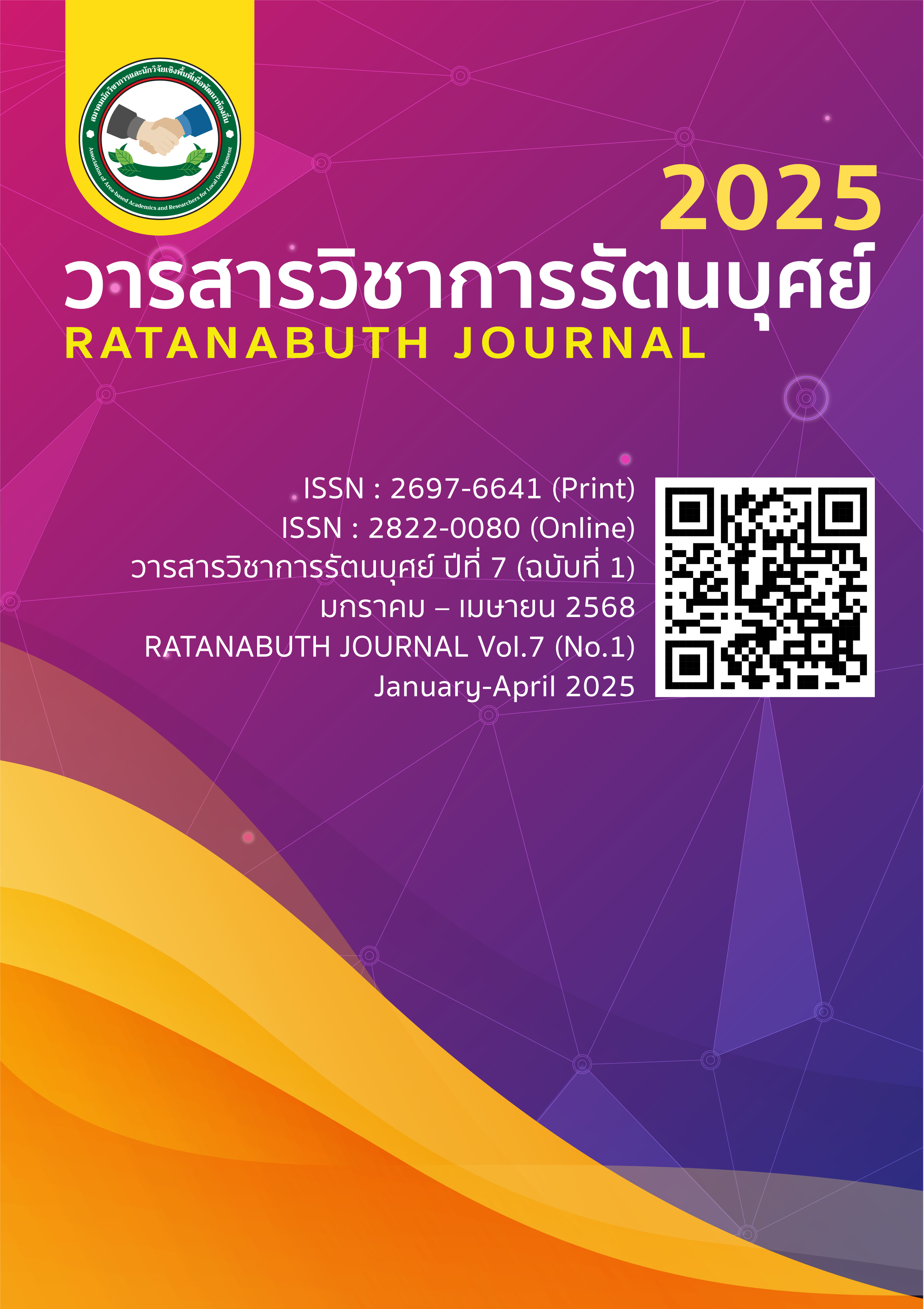Development of Quinoa and Konjac Pearl Products “Buku Carboquinoa” Development of Quinoa and Konjac Pearl Products “Buku Carboquinoa”
Main Article Content
Abstract
This research aims to 1) develop a pearl bead product from quinoa and konjac under the name “Konjac Caboquinoa” and 2) analyze the nutritional value of the new product in comparison with the conventional pearl bead product. 3) Study the satisfaction of the consumer group between the new product and the general product. The experimental research method was used by defining the ingredients of new products and repeating until the appropriate proportion was obtained. The products were then analyzed for nutritional value by Central Laboratory (Thailand) Co., Ltd. After receiving the test results, the consumer satisfaction study was conducted using a questionnaire as a tool for collecting data from a sample group of 52 students of Valaya Alongkorn Rajabhat University Demonstration School under Royal Patronage. The data were analyzed using descriptive statistics.
The research found that: 1) The innovative tapioca pearls created have the appropriate composition of 3 parts cassava flour, 2 parts quinoa flour, 1-part konjac powder, and 1 part cocoa powder. 2) The Nutritional analysis revealed that the chemical composition of the innovation has higher protein and fat content than regular tapioca pearls at a ratio of 1.61:0.20 and 0:0.97 per 100 grams. 3) However, it has lower carbohydrate content than regular tapioca pearls at a ratio of 88.70:31.38. It was found that the experimental consumer group was more satisfied with the innovation in terms of color, smell, taste, and overall preference, while being less satisfied with the texture compared to regular tapioca pearls.
Article Details

This work is licensed under a Creative Commons Attribution-NonCommercial-NoDerivatives 4.0 International License.
References
กรมวิชาการการเกษตร กลุ่มวิจัยพฤกษศาสตร์และพิพิธภัณฑ์พืช สำนักคุ้มครองพันธุ์พืช. (2562). การใช้ประโยชน์จากฐานชีวภาพของพืชสกุลบุกในพื้นที่ทองผาภูมิ. นนทบุรี: เกินคุ้ม มีเดีย.
คณะเภสัชศาสตร์ มหาวิทยาลัยอุบลราชธานี. (2567). ฐานข้อมูลสมุนไพร. สืบค้นเมื่อ 9 ตุลาคม 2567, จาก https://phar.ubu.ac.th/herb-DetailThaicrudedrug/79
จิราภรณ์ บุราคร และคณะ. (2567). การใช้แป้งสาคูร่วมกับผงบุกในเม็ดไข่มุก. วารสารวิทยาศาสตร์ มข., 52(1), 67–78.
ดวงกมล ตั้งสถิตพร และคณะ. (2563). การใช้แป้งมันเทศสีม่วงทดแทนแป้งมันสำปะหลังในผลิตภัณฑ์เม็ดไข่มุก. วารสารเทคโนโลยีคหกรรมศาสตร์ มหาวิทยาลัยเทคโนโลยีราชมงคลพระนคร, 2(2), 1–15.
บริษัท ห้องปฏิบัติการทดลองกลาง (ประเทศไทย) จำกัด. (2567). ผลการทดสอบผลิตภัณฑ์เม็ดไข่มุกจากควินัวและบุก “บุก คาโบควินัว” หนังสือรับรองการตรวจเลขที่ TRBK67/56258. สืบค้นเมื่อ 27 พฤศจิกายน 2567, จาก https://centrallabthai.com/index.php/th/
ภัทราภรณ์ สุขขาว และกังสดาล หมู่ภัทรโรจน์. (2567). การพัฒนาผลิตภัณฑ์เม็ดไข่มุกจากข้าวไรซ์เบอร์รี่ไร้น้ําตาลเสริมใยอาหาร. วารสารเทคโนโลยีการอาหาร มหาวิทยาลัยสยาม, 19(1), 50–69.
โรงเรียนสาธิตมหาวิทยาลัยราชภัฏวไลยอลงกรณ์ ในพระบรมราชูปถัมภ์. (2567). งานแสดงผลงานนวัตกรรมทางการศึกษานักเรียนระดับชั้นมัธยมศึกษาตอนปลาย. สืบค้นเมื่อ 27 พฤศจิกายน 2567, จาก https://www.vru.ac.th/demonstration-school/
สถาบันโภชนาการ มหาวิทยาลัยมหิดล. (2567). ควินัว Quinoa พืชทางเลือกเพื่อสุขภาพให้คุณประโยชน์สูงต่อร่างกาย. สืบค้นเมื่อ 20 สิงหาคม 2567, จาก https://op.mahidol.ac.th/ga/mgr-76/
MARKETINGOOPS. (2021). National Bubble Tea Day. สืบค้นเมื่อ 8 สิงหาคม 2024, จาก https://www.marketingoops.com
Wangein. (2018). The effects of bubble milk tea. สืบค้นเมื่อ 22 กันยายน 2024, จาก https://www.thaihealth.or.th/Content/40698.html

